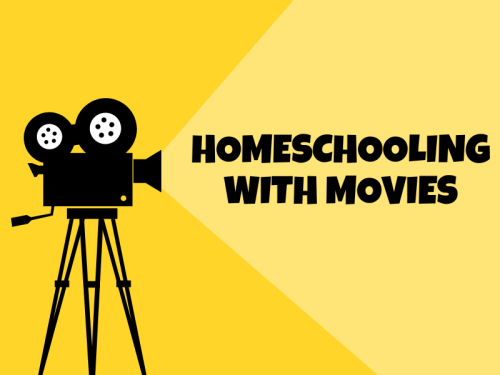by Sarah Major M.Ed.
I read an article the other day that really tugged at my heart. The author mourned the fact that kindergarten as it should be seems to be a thing of the past. Gone is the free play, the crayons and paint, the housekeeping center, the emphasis on learning social interactions and skills. She painted such a poignant picture of sunlit rooms and happy children thriving and creating. She decried today’s widespread, headlong dash towards increasing academics in kindergarten.
No matter how much I agree with the author’s viewpoint regarding the true work of kindergarten, I am not sure there is much we can do to change that academic push for beginners. Because I am totally aware of the segment of our population that frowns horribly on teaching our young children anything smacking of school, I always squirm a bit when customers write me to say that their preschoolers are loving our teaching resources. I think my guilty conscience is rooted in a book I read by David Elkind called Miseducation. The premise of the book is that we are going to create a whole generation of at risk children if we begin to push schooling in preschool. Elkind followers, including the head of the education department in my graduate school, apply a blanket rule towards teaching preschoolers. You cannot do it, apparently, without mistreating them. Elkind makes an impassioned point, my department head is far more educated than I and surely knows better, but still I raise a timid hand to ask, “Might this only be one part of the story?”
Most Issues Are Not Black and White
Have you ever found yourself listening to a well-delivered argument which you feel is so airtight as to be unanswerable…only to find yourself listening to an equally well argued point directly opposing the first viewpoint? I have many times! I think in such cases what this means is that there is no clear cut way to choose a course of action and make a blanket rule that could be applied across the board. Far from being black and white, there are myriad shades of meaning between polar extremes.
Do I believe kindergartners should play? YES. Yes I do. Do I also believe in teaching very young children? YES. Yes I do. But what I believe lies somewhere in the middle of the argument for and against teaching young children. I do not believe that you prevent learning problems by starting to teach children when they are younger. The problem No Child Left Behind tried to address is not going to be solved by starting to teach reading and math in preschool. Not unless the method used is drastically changed. Ironically, if we change the method by which we teach, we could wait and begin to teach in first grade – or even second grade!
Use a Barometer
Recently I’ve heard from several parents who called to say they were distressed because their kindergartners were beginning to move from loving books to hating them because of what was being required of the kids in school. The children were not responding to the drills and flashcards, and the result was that they were turning away from an earlier love of books and reading. In cases such as these, STOP what is being done. If a teacher insists you drill your child at home, find an alternative right away. I think the decision about whether or not to teach young children can be made by answering the following questions. Is the child playing? Is he having fun? Is she engaged? Does he want to do this? If the answers are no, the only option we have is to stop what we are doing immediately because we will cause harm.
Change the Approach: Use Visuals and Play
What we can do is change how our children learn the basics of reading, writing, and arithmetic. If we can utilize visuals and play, kids will gain the knowledge they need, but will not feel the stress of “doing school” too early. Best of all, using visuals and play will have the effect of cutting “school time” greatly. When I taught kindergarten in my home, the children far surpassed grade level expectations, but we did all our learning through creative play and visuals, and all our learning was done in less than two hours a day including coloring and craft time. Those were the days! What we were doing was working inside a system (school), but not using the regular system’s methodology. I went where the kids went – to what drew them. And it worked so well!
Is It Possible That Neither Side is Totally Right?
I think in the debate about academics and kindergarten, the point might have been totally missed. The point is not should we teach the very young, but rather HOW shall we teach them? I believe that if you have an engaged child, that child will learn and will love learning and we work very hard to find ways to make learning effortless. er, as are O and U.
Sarah Major, CEO of Child1st Publications, grew up on the mission field with her four siblings, all of whom her mother homeschooled. As an adult, Sarah has homeschooled a small group of children in collaboration with their parents, and has taught from preschool age to adult. Sarah has been the Title 1 director and program developer for grades K-7, an ESOL teacher, and a classroom teacher. As an undergraduate student, Sarah attended Wheaton College in Wheaton, Ill. and then received her M.Ed. from Aquinas College in Grand Rapids, MI. In 2006 Sarah resigned from fulltime teaching in order to devote more time to Child1st, publisher of the best-selling SnapWords™ stylized sight word cards. In her spare time Sarah enjoys gardening, cooking, pottery, quilting, and spending time with her family.
Child1st Publications, LLC
I read an article the other day that really tugged at my heart. The author mourned the fact that kindergarten as it should be seems to be a thing of the past. Gone is the free play, the crayons and paint, the housekeeping center, the emphasis on learning social interactions and skills. She painted such a poignant picture of sunlit rooms and happy children thriving and creating. She decried today’s widespread, headlong dash towards increasing academics in kindergarten.
No matter how much I agree with the author’s viewpoint regarding the true work of kindergarten, I am not sure there is much we can do to change that academic push for beginners. Because I am totally aware of the segment of our population that frowns horribly on teaching our young children anything smacking of school, I always squirm a bit when customers write me to say that their preschoolers are loving our teaching resources. I think my guilty conscience is rooted in a book I read by David Elkind called Miseducation. The premise of the book is that we are going to create a whole generation of at risk children if we begin to push schooling in preschool. Elkind followers, including the head of the education department in my graduate school, apply a blanket rule towards teaching preschoolers. You cannot do it, apparently, without mistreating them. Elkind makes an impassioned point, my department head is far more educated than I and surely knows better, but still I raise a timid hand to ask, “Might this only be one part of the story?”
Most Issues Are Not Black and White
Have you ever found yourself listening to a well-delivered argument which you feel is so airtight as to be unanswerable…only to find yourself listening to an equally well argued point directly opposing the first viewpoint? I have many times! I think in such cases what this means is that there is no clear cut way to choose a course of action and make a blanket rule that could be applied across the board. Far from being black and white, there are myriad shades of meaning between polar extremes.
Do I believe kindergartners should play? YES. Yes I do. Do I also believe in teaching very young children? YES. Yes I do. But what I believe lies somewhere in the middle of the argument for and against teaching young children. I do not believe that you prevent learning problems by starting to teach children when they are younger. The problem No Child Left Behind tried to address is not going to be solved by starting to teach reading and math in preschool. Not unless the method used is drastically changed. Ironically, if we change the method by which we teach, we could wait and begin to teach in first grade – or even second grade!
Use a Barometer
Recently I’ve heard from several parents who called to say they were distressed because their kindergartners were beginning to move from loving books to hating them because of what was being required of the kids in school. The children were not responding to the drills and flashcards, and the result was that they were turning away from an earlier love of books and reading. In cases such as these, STOP what is being done. If a teacher insists you drill your child at home, find an alternative right away. I think the decision about whether or not to teach young children can be made by answering the following questions. Is the child playing? Is he having fun? Is she engaged? Does he want to do this? If the answers are no, the only option we have is to stop what we are doing immediately because we will cause harm.
Change the Approach: Use Visuals and Play
What we can do is change how our children learn the basics of reading, writing, and arithmetic. If we can utilize visuals and play, kids will gain the knowledge they need, but will not feel the stress of “doing school” too early. Best of all, using visuals and play will have the effect of cutting “school time” greatly. When I taught kindergarten in my home, the children far surpassed grade level expectations, but we did all our learning through creative play and visuals, and all our learning was done in less than two hours a day including coloring and craft time. Those were the days! What we were doing was working inside a system (school), but not using the regular system’s methodology. I went where the kids went – to what drew them. And it worked so well!
Is It Possible That Neither Side is Totally Right?
I think in the debate about academics and kindergarten, the point might have been totally missed. The point is not should we teach the very young, but rather HOW shall we teach them? I believe that if you have an engaged child, that child will learn and will love learning and we work very hard to find ways to make learning effortless. er, as are O and U.
Sarah Major, CEO of Child1st Publications, grew up on the mission field with her four siblings, all of whom her mother homeschooled. As an adult, Sarah has homeschooled a small group of children in collaboration with their parents, and has taught from preschool age to adult. Sarah has been the Title 1 director and program developer for grades K-7, an ESOL teacher, and a classroom teacher. As an undergraduate student, Sarah attended Wheaton College in Wheaton, Ill. and then received her M.Ed. from Aquinas College in Grand Rapids, MI. In 2006 Sarah resigned from fulltime teaching in order to devote more time to Child1st, publisher of the best-selling SnapWords™ stylized sight word cards. In her spare time Sarah enjoys gardening, cooking, pottery, quilting, and spending time with her family.
Child1st Publications, LLC
www.child1st.com
800-881-0912
PO Box 150226
Grand Rapids, MI 49515





